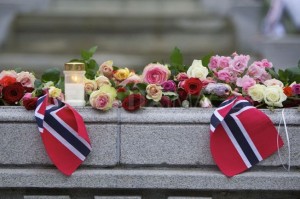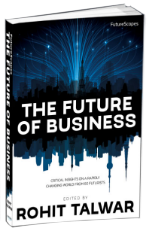02 Aug When terror struck the Land of Peace
 It’s a week since Norway endured its bloodiest event(s) in modern times and the most serious national security violation since the Nazi occupation in 1940. Rightwing extremist Anders Breivik carried out the worst, and as far as I know, only terrorist attack ever on Norwegian soil. Following a bomb at the government building, which drew most available police and rescue forces to this location, the 32 year old went to a youth camp at the island Utøya and carried out history’s most atrocious shooting spree in peace time – an attack which viciousness was augmented by the fact that it was aimed at unsuspecting minors. Needless to say, the whole country is sill shaken and the whole world shocked at this single man’s blood thirsty, twisted agenda and accomplishments.
It’s a week since Norway endured its bloodiest event(s) in modern times and the most serious national security violation since the Nazi occupation in 1940. Rightwing extremist Anders Breivik carried out the worst, and as far as I know, only terrorist attack ever on Norwegian soil. Following a bomb at the government building, which drew most available police and rescue forces to this location, the 32 year old went to a youth camp at the island Utøya and carried out history’s most atrocious shooting spree in peace time – an attack which viciousness was augmented by the fact that it was aimed at unsuspecting minors. Needless to say, the whole country is sill shaken and the whole world shocked at this single man’s blood thirsty, twisted agenda and accomplishments.
I happened to be downtown Oslo during the bomb attack. As an expat living in the U.S., this is the second time and in the second country I experience the immediate aftermath of a major terrorist attack. The country is still in mourning, but making some forecasts seems unavoidable. Will Norway too enter an era of insecurity and frequent crises similar to the U.S.? Will people start looking over their shoulder as in other parts of the world?
Cyclical theories suggest that phenomena in society often move in waves. At face value, this may sound more like mysticism and astrology, but it is in fact the paradigm that many macroeconomic theories and generational theories spring out of. Sophisticated computer models show that many phenomena tend to render an S-shaped progress pattern when simulated over a certain time period. These computer models give quasi-empirical support to the adage that history repeats itself. If the scope is too short we may mistake an upward swing to represent one-directional, unbroken progress. But whether we talk about ideologies, social moods or even material living standards, a new incarnation of a bygone phenomenon may surprise us after being dormant for decades. It may help to associate the contradictions that give us these cyclical patterns with Hegel’s dialectics or the idea that a trend will be met with its counter trend swinging the pendulum back the other way.
After the twin attacks last week, Newsweek reporter Howard Fineman posted a piece in Huffington post under the descriptive title: “Now, not even Norway is safe”. In the U.S. the perception that danger is always lurking around the corner – or that sudden destruction in the form of terrorism, massacres or even natural forces can happen when you least expect them – has gradually seeped into the American psyche, with the Oklahoma bombing and Columbine massacre setting the stage for the ultimate fear many people felt after 9/11. Each stunning shock turns people a little bit more apprehensive than before. Social moods are often reflected in the way people parent their children, and so it can be useful to look at parenting trends to gauge society’s anxiety level at large. After 9/11 you could make truckloads of money if you could sell an idea or a product intended to protect yourself or your loved ones. For trend analysts and marketers the term “Security mom” started to replace the earlier term “Soccer mom”, indicating a growing urge to protect ones children from the consequences of far more grave events than missing a sports tournament. After the most intense fear died down, “Helicopter parent” became a more widespread term, illustrating the parent who was committed to hovering above their children’s heads incessantly in order to provide for their security as well as their achievements. This is a distinction the pre-9/11 “Soccer mom” term failed to capture. Whereas the U.S. is deep into the era Strauss and Howe describe as the “Fourth Turning”, or the crisis era, Norway has been riding a wave of innocence for quite long, making these concepts sound much more alien to the Norwegian people than to the Americans. The helicopter allegory is rarely used in describing Norwegian parents who continue to send their children to their un-policed schools by foot without adult supervision. The closest synonym for a similar category in Scandinavia is probably “curling parents”, sometimes used in consumer research to describe hyper-parenting. In my opinion this is someone who (over)protects the child from life’s failures, but not someone who excessively protects it from physical dangers. Norwegian parents raise children based on a longstanding trust in Norway as a safe place to grow up. The security debates that preoccupy American politics from time to time are virtually absent in Norway.
It was just a matter of time before another sick soul decided to play out his narcissistic morbid agenda and thereby harvest more than 15 minutes of fame. Even in a country that prides itself on international peace work. In other parts of the world a pattern has already started to emerge: Nutcase spends lonely hours spinning up twisted ideas and worldviews in his boy room. Nutcase posts twisted ideas online where he reaps the support from other nutcases. Together, nutcases spin up outlandish conspiracy theories. Nutcase carries out terrorist attack or massacre. Nutcase hands himself over to the police. News media plaster his contented smirk everywhere. Nutcase revels in the attention from media and is quite happy with his newly acquired notoriety.
There were few helicopter parents in Norway when 600 youths visited the Utoya summer camp – a camp that was meant to inspire community spirit, tolerance and faith in each other. Speaking of helicopters, there were in fact no real rescue helicopters available either, giving the mass murderer the opportunity to carry on with his bloodbath for a cruelly long period of 90 minutes before he was brought under control. It may be difficult for some non-Norwegian to understand how this was possible. Where were the police squads? The helicopters? The snipers? The crisis management strategies? These questions are understandable, but Norway is a country that prides itself on its “soft investments”, such as diplomacy and peace-keeping forces instead of combat forces, or faith instead of suspicion. If you take this faith in peacefulness away – or lack of fear if you will – you take away a great part of the Norwegian identity. At least maybe until now.
One thing is for sure: Norway will never be the same. Just as American kids who grow up with the threat of school massacres and terrorism develop a different outlook than their parents’ generation, Norway’s kids are bound to be affected by this at their most existential level as well. But just like the 9/11 generation united under the, “Yes, we can” banner in support of Obama before the election in 2008, Norwegian kids too may also choose to foster more optimism and community rather than resentment and fear. As a matter of fact, they already do when the main slogan coming from the massacre survivors is: “If one man can create that much hate, you can only imagine how much we can love collectively.”
Generations growing up with a mood of uncertainty and unpredictability as the “new normal” will possibly adjust with more flexibility and react with less panic when something happens. Ironically this flexibility might be exactly what equips them with more fearlessness and tolerance, which are the opposite qualities of what terrorism feeds on. In that case terror will be less effective and possibly less frequent. It’s all in the cycle.
Image: Demotix


Sorry, the comment form is closed at this time.